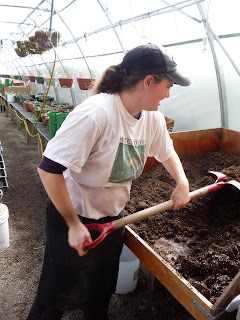Fall Rye is a seed that is planted in the fall, generally in a vegetable garden, for the purpose of tilling into the soil in spring to add organic matter to your soil. The benefits of using this crop are threefold.
- When planted immediately after harvest, it quickly germinates and the extensive root system inhibits the germination of weed seeds thus keeping those pests to a minimum and reducing your work in the spring. Many insects and diseases overwinter in weeds so the rye will help protect your garden from infestations the following summer.
- The grass and its roots will prevent erosion of your soil throughout the fall and winter as well as catching the snow to provide a good snow cover.
- When tilled into your soil in the spring the rye provides a green manure which is high in nutrients and organic matter. This is the equivalent of purchasing manure and compost to add to your soil, but much less expensive since a kilogram of the seed will cover 500 sq’.
There are a few things to be aware of when using this type of crop.
- The plant has a very extensive root system that is difficult to turn with a fork so a tiller is recommended.
- The plant MUST be tilled in before it goes to seed in the spring or you will have rye growing in your vegetable garden for the rest of time.
To plant the seed, broadcast it in your garden as you dig your vegetables. You do not have to wait till the garden is empty but rather spread the seed as you empty the garden. Your garden does not have to be tilled beforehand unless your soil is quite compacted which it should not be if you are digging or pulling your vegetables.
In the spring your garden should be tilled while it is still damp but not wet. Rye absorbs a lot of moisture and will dry your garden out in a very short time. Be sure to till before the rye goes to seed.
Fall rye is an excellent and inexpensive option for amending soil for gardeners whether they practice organic methods or not.














